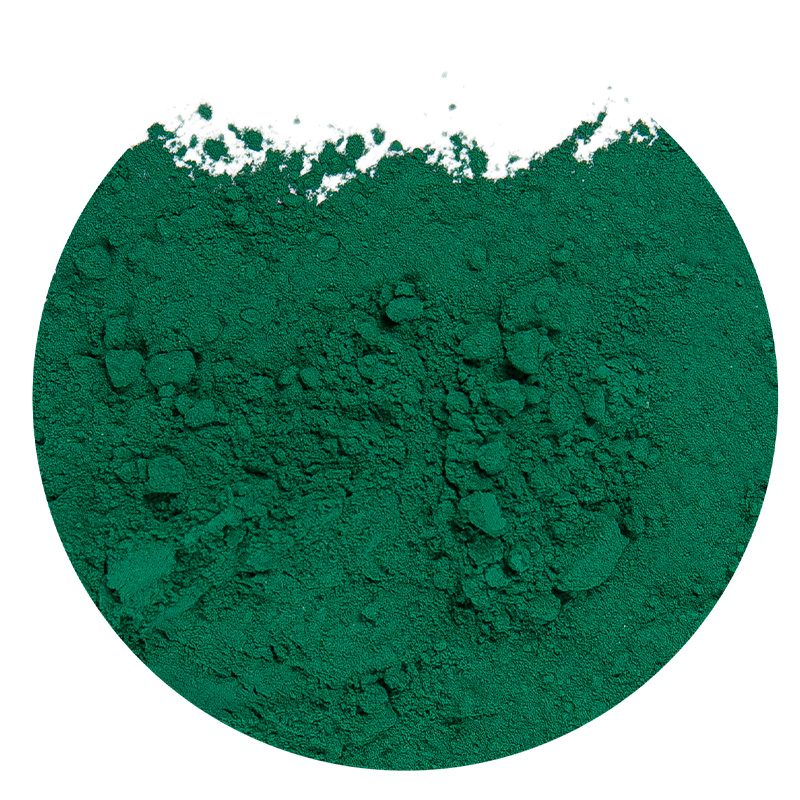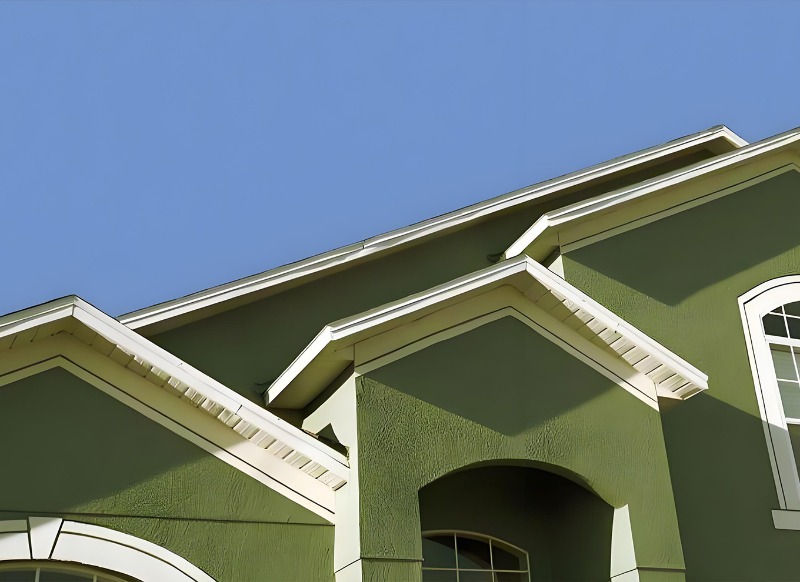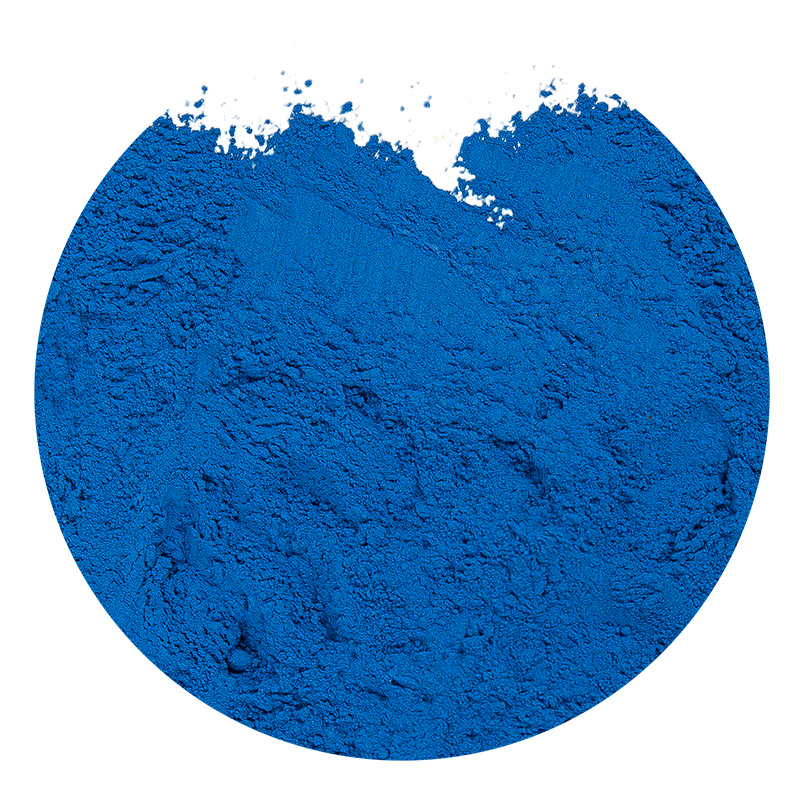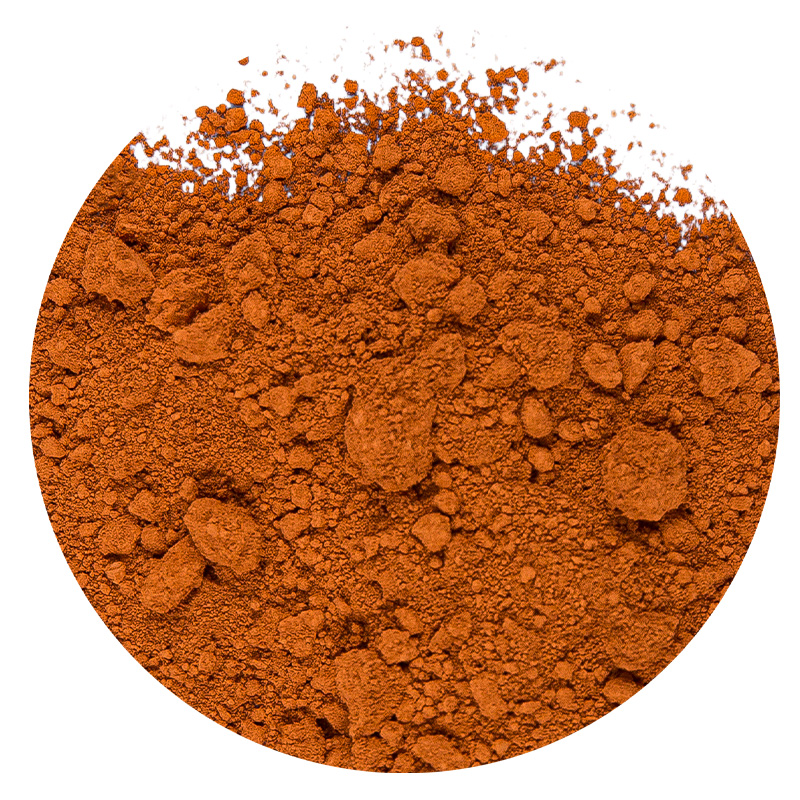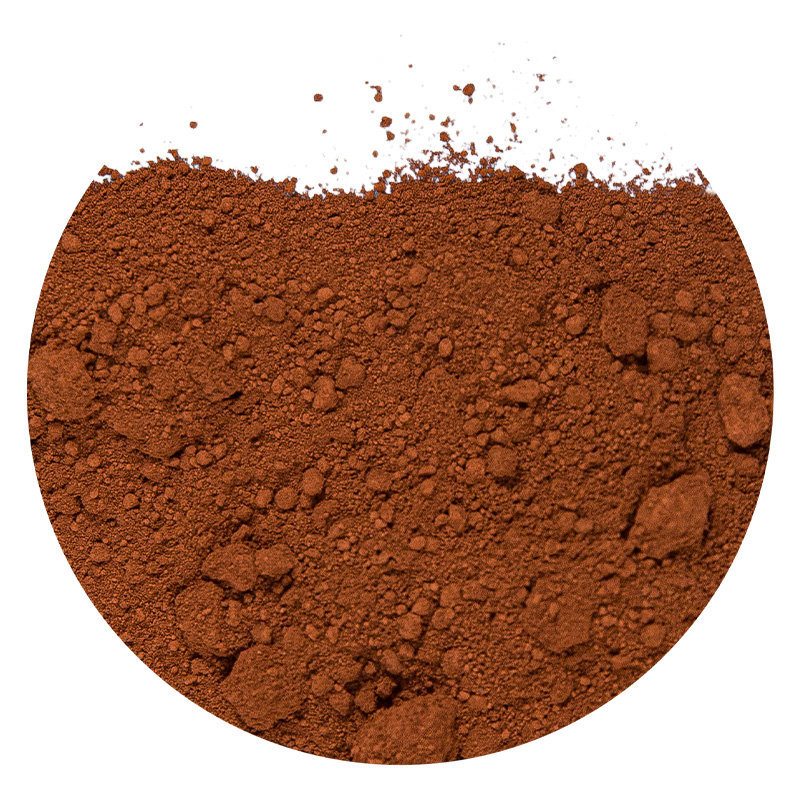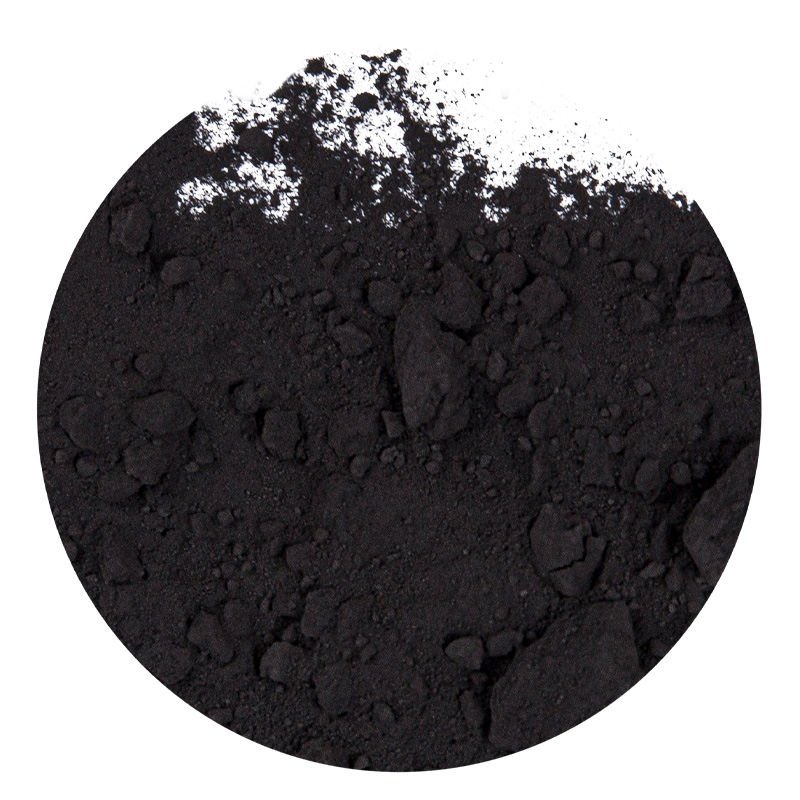Iron Oxide Green: A Comprehensive Guide
1. Introduction
Iron Oxide Green is a widely used inorganic green pigment, valued for its excellent color stability, weather resistance, and environmental friendliness. Compared with organic green pigments, Iron Oxide Green demonstrates higher stability under sunlight, temperature variations, and chemical exposure, maintaining its vibrant green color for a long time, making it particularly suitable for green architectural coatings and outdoor applications.
Using Iron Oxide Green not only achieves a visually appealing green effect but also aligns with modern environmental protection and sustainability requirements. Being an inorganic pigment, its natural composition is stable, non-volatile, and non-toxic to humans and the environment. It also exhibits outstanding weather resistance, maintaining its color over prolonged exposure to sunlight, rain, or humid conditions.
When selecting architectural coatings or industrial pigments, Iron Oxide Green often replaces fading organic green pigments, enhancing product lifespan and environmental value. Depending on application needs, its color concentration and particle size can be adjusted for interior and exterior coatings, plastic coloring, or ceramic glazing.
Performance Comparison (Iron Oxide Green vs. Conventional Organic Green Pigments):
| Performance | Iron Oxide Green | Conventional Organic Green Pigments |
|---|---|---|
| Light Stability | High (up to thousands of hours without fading) | Medium (susceptible to UV degradation) |
| Weather Resistance | High (resistant to weathering, acids, and alkalis) | Low (fades outdoors easily) |
| Environmental Safety | High (non-toxic, non-volatile) | Medium (some pigments contain heavy metals) |
| Service Life | Long (years to decades) | Short (1-3 years, prone to fading) |
| Application Range | Coatings, plastics, ceramics, etc. | Indoor coatings and short-term decoration |
This comparison clearly demonstrates the advantages of Iron Oxide Green in weather resistance, environmental friendliness, and long-term durability, making it a key solution for modern industrial and architectural sustainable applications.
2. Basic Properties of Iron Oxide Green
Iron Oxide Green is a stable inorganic pigment with excellent physical and chemical properties, widely used in industrial and architectural fields. Its basic properties can be analyzed in detail as follows:
2.1 Chemical Stability
Iron Oxide Green is an inorganic oxide pigment with highly stable chemical properties. Under normal conditions, it does not react with most acids, bases, or solvents, ensuring long-term color stability in indoor, outdoor, humid, or acidic environments.
- pH Range: 2–12
- Acid Resistance: Stable in 1%-5% acid solutions for long periods
- Alkali Resistance: Does not fade in alkaline conditions (pH 10–12)
2.2 Light and Weather Resistance
- Light Stability: Can withstand ≥3000 hours of continuous exposure without significant fading
- Weather Testing: Color change index ΔE ≤ 2 under simulated weathering and rain
- Applicable Range: Outdoor architectural coatings, concrete coloring, landscaping facilities
2.3 Particle Size and Dispersibility
- Typical Particle Size: 0.2–2 μm
- Dispersibility: Good, can be uniformly dispersed in water-based or oil-based coatings
- Coverage: Higher than most organic green pigments, suitable for thick coatings and outdoor applications
2.4 Environmental and Safety Properties
- Toxicity: Non-toxic, no volatile organic compounds
- Sustainability: Long lifespan reduces repeated coating waste
- Applications: Green architectural coatings, children's plastic toys, food packaging materials
2.5 Heat Resistance
- Temperature Resistance: Withstands 300–500°C without fading
- Suitable Materials: Ceramic glazing, heat-curable coatings, plastic extrusion
Summary: Iron Oxide Green’s chemical stability, weather resistance, environmental safety, and heat resistance make it a key inorganic green pigment. It provides long-term color stability in green architectural coatings, plastics, ceramics, and other industrial applications, supporting sustainability.
3. Classification and Types of Iron Oxide Green
3.1 By Production Method
- Natural Iron Oxide Green: Derived from mineral grinding or physical/chemical treatment. Features natural color and uniform particles but limited color range. Applications include traditional architectural coatings and ceramics.
- Synthetic Iron Oxide Green: Produced via chemical precipitation, oxidation, or reduction. Features pure, controllable color with wide range. Applications include modern coatings, plastics, and fine finishing.
3.2 By Physical Form
- Powder: Fine powder, good dispersibility for coatings and plastics. Requires uniform dispersion to avoid clumping.
- Slurry: Water-based or oil-based dispersions, convenient for direct application in coatings and finishing.
3.3 By Application Field
- Architectural Coatings: High weather resistance, UV protection, long-lasting color. Applications: green architectural coatings, exterior walls, concrete coloring.
- Plastics: High-temperature and UV resistance, good dispersibility. Applications: outdoor pipes, garden facilities, children's plastic products.
- Ceramics and Coatings: High-temperature resistant, stable color, compatible with glazes. Applications: ceramic glazes, art ceramics, heat-curable coatings.
3.4 By Particle Size and Coverage
- Ultra-fine: <0.5 μm, soft color, suitable for fine coatings.
- Regular: 0.5–2 μm, high coverage, suitable for building and industrial applications.
- Coarse: >2 μm, high abrasion resistance, suitable for outdoor flooring and concrete coloring.
Summary: Iron Oxide Green has diverse classifications to meet industrial and architectural needs. Selecting suitable production methods, physical forms, and particle sizes allows optimal color performance and durability while maintaining environmental sustainability.
4. Main Applications of Iron Oxide Green
4.1 Architectural Coatings
- Provides long-lasting green color and weather resistance for interior and exterior walls, concrete, and landscaping facilities.
- Features: High light and weather stability, environmentally safe, high coverage.
- Examples: Outdoor walls in city parks maintain color for years; green concrete exterior walls achieve uniform color without affecting structural integrity.
4.2 Plastics
- Used as a colorant in outdoor and durable plastic products.
- Features: High-temperature resistance (~300°C), UV and weather resistance, good dispersibility.
- Examples: Outdoor fences, pipes, flower pots, and children’s plastic toys achieve stable green color and safety.
4.3 Ceramics and Other Materials
- Used in ceramics, glass, and heat-curable coatings.
- Features: Heat-resistant, chemically stable, uniform and saturated color.
- Examples: Ceramic glazes maintain stable green color; outdoor metal coatings retain durability and aesthetics.
4.4 Summary
Iron Oxide Green’s applications cover architectural coatings, plastics, ceramics, and other industrial materials. Its weather resistance, environmental safety, and heat resistance make it ideal for sustainable applications while maintaining long-term color stability.
5. Environmental and Sustainability Benefits
5.1 Non-toxic and Safe
Iron Oxide Green is non-toxic, free of heavy metals, and safe for long-term use. It does not emit VOCs in children’s toys, food packaging, or indoor coatings. Compared with organic pigments, it maintains stability under light and heat without generating harmful substances.
5.2 Durability and Resource Efficiency
Long-lasting color reduces the need for repeated coating and material waste, saving energy and resources. Example: Adding Iron Oxide Green to architectural coatings maintains exterior wall color for years without frequent renovation.
5.3 Sustainable Production and Use
Raw materials are stable and controlled, with energy-efficient and low-emission production processes. It does not pollute water or soil when used in coatings, plastics, or ceramics. It supports energy-saving green construction projects.
5.4 Promoting Green Industry
Iron Oxide Green adoption aligns with green building, environmentally friendly materials, and low-carbon development. It improves environmental standards and promotes corporate green transformation, forming a complete sustainable product system.
5.5 Summary
Iron Oxide Green’s non-toxic, durable, and sustainable production properties make it an ideal choice for modern green industrial and architectural materials, providing reliable solutions for environmentally friendly applications.
6. Recommendations for Selection and Use
6.1 Selection Criteria
- Particle Size: Fine (<0.5 μm) for artistic coatings, regular (0.5–2 μm) for building/plastics, coarse (>2 μm) for concrete/flooring.
- Color Saturation: Adjust according to application needs for uniform and stable green.
- Environmental Standards: Ensure non-toxic, low VOC, and compliant with green building standards.
6.2 Usage Tips
- Dispersibility: Fully disperse powders to avoid clumping or uneven color using high-shear mixing or grinding.
- Addition Ratios: Coatings 1–5%, plastics 0.5–3%, ceramics 1–10% depending on formulation.
- Heat and Weather Protection: Ensure good bonding with substrates; use weather-resistant additives or primers if needed.
6.3 Precautions
- Storage: Keep dry, ventilated, avoid sunlight; stir or grind if stored long-term to prevent clumping.
- Compatibility: Test small batches when mixing with other coatings or plastics.
- Safety: Though non-toxic, use dust protection when handling powders.
6.4 Summary
Proper selection of particle size, color, addition ratio, and dispersion, combined with heat and weather protection, ensures optimal performance of Iron Oxide Green in coatings, plastics, and ceramics while maintaining sustainability and safety.
7. Conclusion
- Core Properties: Chemically stable, adjustable particle size, non-toxic, environmentally friendly.
- Wide Applications: Natural and synthetic forms; powder and slurry; used in coatings, plastics, and ceramics.
- Environmental & Sustainable Value: Reduces waste, energy-saving, low emissions.
- Usage Recommendations: Correct particle size, color, addition, and dispersion ensure performance and durability.
Iron Oxide Green provides high-quality, durable, and environmentally friendly pigment solutions, supporting sustainable development in modern industrial and architectural applications.
FAQ about Iron Oxide Green
1. What are the main application areas of Iron Oxide Green?
Iron Oxide Green is widely used in architectural coatings, plastics, ceramics, and heat-curable coatings. It provides long-lasting green color and weather resistance in coatings, high-temperature and UV resistance in plastics, and stable, saturated color in ceramics.
Company Info: Deqing Demi Pigment Technology Co. , Ltd. specializes in research, development, and production of inorganic iron oxide pigments, covering red, yellow, black, brown, green, orange, and blue pigments. Their composite pigments offer high performance and stability for diverse applications.
2. What are the environmental and sustainable benefits of Iron Oxide Green?
Iron Oxide Green is non-toxic, free of VOCs, and safe for humans and the environment. Its durability reduces repeated coating and material waste, supporting sustainable development and low-carbon applications.
Company Info: Deqing Demi Pigment Technology Co. , Ltd. is committed to environmental protection, safe production, and employee health. Its trade operations are handled by Deqing Hele New Material Technology Co Ltd., providing full-service support for customers.
3. How to select and use Iron Oxide Green for optimal performance?
Consider particle size, color concentration, environmental standards, and application. Fine particles suit artistic coatings, regular for building/plastics, coarse for concrete/flooring. Ensure proper dispersion, addition ratio, and heat/weather resistance for stable color and durability.
Company Info: Deqing Demi Pigment Technology Co. , Ltd. offers three series of high-performance composite iron oxide pigments: standard, micronized, and low heavy metal content, providing reliable green pigment solutions for industrial needs.

 English
English عربى
عربى русский
русский Español
Español